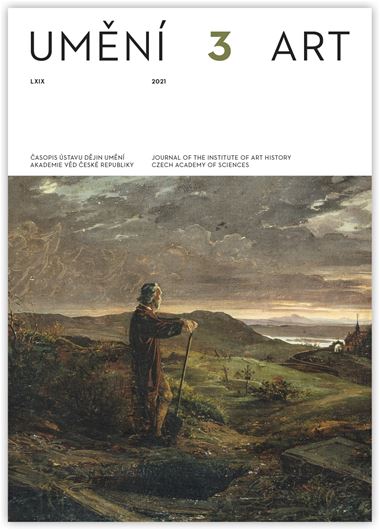Anežka Mikulcová
The Gravedigger by Josef Mánes: Personal Sorrow, Graveyard Reportages and Landscape of Mood in 19th Century Painting
The painting Hrobník (The Gravedigger, 1843) is an early work by Josef Mánes (1820–1871). The motif is an example of the fascination with funereal and macabre themes that feature in the painting and literature of European Romanticism. Interesting analogies are to be found in the paintings of Caspar David Friedrich and the literary works of Karel Hynek Mácha and Karel Sabina. As well as the interest in sepulchral motifs, the initial impulse behind the choice of theme was the death and funeral of František Tkadlík, Mánes’s teacher at the Prague Academy. The intensification of the autobiographical element of the painting can be seen in its genesis (1840–1843), as evidenced by two studies in oil. During this period of his life, Mánes was greatly affected by the serious illness of his father, the painter Antonín Mánes, as well as by relationships at the Prague Academy. Despite personal disagreements with the management of the Academy, the young Mánes was inspired by the work of so-called lyrical painters operating in the spirit of landscapes of mood and represented in Prague by Christian Ruben, Mánes’s other teacher and director of the Academy. The final form of Hrobník reflects both the characteristic features of such paintings and the informal training Mánes received from his father Antonín in first-hand observation of the landscape. That this work occupies a particular place in Mánes’s oeuvre is revealed by the fact that he never again returned to a similar theme. He displayed Hrobník at the spring exhibition organised by the Society of the Patriotic Friends of Art alongside Smrt Lukáše z Leydenu (The Death of Lucas van Leyden). The latter is traditionally perceived as an epitaph to the painter’s father, and it is clear that in terms of content it forms a counterpart to Hrobník. Despite an initially positive critical reception, the painting was later evaluated by art historians as a mediocre work by an artist at the start of his career, the form and iconography of which were influenced by stereotypes of Romantic painting. We now see this to be an inaccurate and simplistic evaluation.
Anežka Mikulcová: mikulcova.anezka@npu.cz
Full-text in the Digital Library of the Czech Academy of Sciences:
https://kramerius.lib.cas.cz/uuid/uuid:a3054012-c4f0-439e-93eb-bcdee9eb389a
< back

